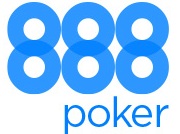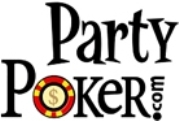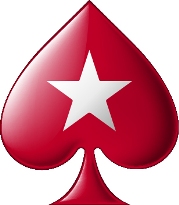Bingo! Some Hands Play Themselves, Part Deux
Just like on the flop, when this happens it’s a real treat. For example, suppose you come in with J♥-T♥, and you get this flop:



Can this flop get any better on the turn?
In this situation you had the then-nut straight with a straight flush redraw. This situation is very nice for you, as anyone with two hearts will be staying in if this is a low-limit game. Some players with a Six or a Ten will also likely stay in, just in case a straight card comes. There would have likely been a raise before the flop if someone had pocket Sevens, Eights, or Nines, but if there was enough action in a loose game, you could have certainly justifi ed calling. Let’s say you’re up against a set of Sevens among other things, and the turn card is the 7♥.
As Vince van Patton says to Mike Sexton on the World Poker Tour telecasts, the “Star Spangled Banner” (or “O Canada” or “God Save the Queen” or another national anthem) is going off in your head! You’re online, so you can dance a jig around the room if you want. But how to extract maximum money from the others? First, it depends on your position. If you’re in early position, with several players it will often be good to go for a check-raise, as anyone with a full house or flush will certainly bet. A full house might go for a check from early position, but a flush will almost certainly bet to force someone with trip Sevens to pay for their draw. The standard play here would be to go ahead and raise on the turn rather than the river because any hands with high flushes and made full houses will stay in and maybe even re-raise! In online poker, you just never know what someone will call you down with. The other play would be to simply call on the turn. This could be good, especially if someone in front of you raises. It would then be worth it to go for the check-raise on the river because the other player will be convinced their hand is the winner. This is highly debatable because if the river is checked around, you will have lost two or three bets; but if you are convinced someone behind you will bet, go for it. Hey, if the hands are high enough, they may just raise you right back! These are indeed the good times.
An absolutely great way to trap people is when you make quads and someone else makes a full house with an overset. Let’s say you limp in from late position with 4♣4♠ and the flop comes, as shown below:


 Flopping quads can be very profi table or kill your action
Flopping quads can be very profi table or kill your action
This is a monster flop for you because no raisers before the flop likely means that no one is playing a pair of Kings. Two shots at a single card hits all the time, as in about one out of every 23 times; so while it’s a bad beat when you lose, it’s not beyond the realm of possibility that someone slowplaying pocket Kings will try to trap you—you’re still in good shape. Let’s say there are four players left after the flop, in which two players likely to have Kings have bet and someone representing Ace-Four has raised. You decided not to re-raise. The turn card is the K♦.
This card could be a little bit of a scare card for you, but the way we see it, if someone makes a higher four of a kind than you, all you can do is type “nh” (nice hand). Please refrain from typing “nhusob” (nice hand you….), as that would be impolite. You may think it as loudly as you want, however. The two players you believe have singleton Kings now believe they will be splitting the pot, unless they pair their other cards on the river. An interesting thing could happen if you are in position between the two Kings. Let’s assume the player representing a third Four has nothing and bows out whenever it’s their turn. Usually, being caught in the middle or caught in between two players is not what you want, as they can raise and re-raise after you’ve already called one bet. In this case, though, you have the absolute nuts, operating under the assumption all four Kings are accounted for on the board and in hands. After you call the first bet, the two Kings will raise and re-raise. At this point you may either call or raise again. If you think re-raising will scare away action on the river, simply call the three bets. If you think they’ll keep on betting when a third Four doesn’t show up on the river, go ahead and re-raise.
Another situation in which you may get paid is if someone decides to push an overpair on the flop. If you’re in the big blind with the same pocket Fours as before and someone in early position raises you, put them on a big pair or at least AK. Suppose you hit it big and get the flop shown:


 Wait in the weeds for your opponents to make a hand or poker bluff
Wait in the weeds for your opponents to make a hand or poker bluff
If one of your opponents holds A♣-A♦, there’s no way in the world someone would fold in this situation. Smart players will raise for information on the flop to see if someone has a Four. But you’re deciding to lie low for now and bet and call their raise, or simply call their initial bet. Players with hands like K9s will now be loving their hands as well. The turn brings the A♠, and the trap is sprung. Of course, this could be any card higher than a Nine, as long as it makes the overset full house. Less-attentive or less-experienced players could believe Aces over Fours could now be the best hand. Even if you’re going against two full houses (Aces full and Nines full), there are only two cards left in the deck to beat you. That means there is only a 1 in 22 chance either hand will improve. Bet and raise until the pot is capped, or they simply call you.
From the last chapter, you will remember we talked about hands in which you flop a very strong, but not invincible, hand. We’ll continue on with the turn and bring in the next level of thinking about the hand. As you recall, you’re in a hand with four other players before the flop with Q♥-T♥ in the pocket, and you got the flop shown below:


 The turn could easily change this hand for the worse
The turn could easily change this hand for the worse
You now have the nut straight, but the nuts could change. Remember the following:
✦ You could be up against a spade (flush) draw. 5♠-6♠ or any two spades would likely stay in, and 7♠-8♠ is a straight flush draw.
✦ You could be up against a couple of different straight draws. Any Queen or Ten is drawing to tie you, while any Ace is drawing to beat you if a Queen or Ten comes by the end of the hand.
✦ You may be up against a “double draw,” in which a player has to hit only one card to make either a straight or a flush. A♠-T♠ makes a winning straight if a Queen comes and has the nut flush with any spade.
✦ You could be up against a set or two pair. If someone is playing K♥-J♥, they will likely be in until the end, as any King or Jack gives them a full house.
The real vulnerability with this hand, as you will recognize from previous examples, is that your Q♥-T♥ has no redraw. Therefore, you are now simply hoping nothing comes to beat you. Let’s assume two other players, A♠-T♠ and K♥-J♥, are against you after the flop. Table 10.1 gives the percentages of total money won after the flop and after a blank (a card that helps no one) comes on the turn.
Hold ’Em Hand Results |
||
| Hand | Percentage of Money Won | |
| Flop (9♠-J♠-K♦) | Turn (2♣) | |
| Q♥-T♥ | 44.6% | 66.7% |
| A♠-T♠ | 37.0% | 23.8% |
| K♥-J♥ | 18.1% | 9.5% |
Using Miller, Sklansky, and Malmuth’s odds-based system, let’s explore what the betting and action strategies (whether to check, bet, raise, or fold and in what order) might look like in this hand.
Before the flop, it’s very likely the A♠-T♠ would have raised. Because five players stayed in, we’ll assume one of them was the small blind, there are now 10 small bets (five big bets) in the pot. After the flop, the K♥-J♥ with two pair would be likely to bet as a show of strength but also for information to see if the straight is out there. The flush draw could raise on the come (bet to give the impression they have the straight or perhaps a set) to try to get a free card on the turn. This is especially good in late position, because if the turn is checked around to the draw, it gets to freeroll (pay nothing to see) the river. If you have the straight and no redraw, it would likely be the best play to go ahead and get a raise or re-raise out there to force the drawing hands to pay to catch up. Let’s assume the action is now three small bets (K♥-J♥ bet, A♠-T♠ raised, Q♥-T♥ re-raised), K♥-J♥ is laying about 5.25:1 implied odds (two chances at a 10.5:1 four-out draw) and must pay two more small bets after his initial bet to stay in. Assuming A♠-T♠ will call, there will be 17 small bets (8.5 big bets) in the pot, which means calling is correct, as the profi t margin is 3.25 small bets. (8.5 – 5.25 = 3.25) Two additional small bets will put 9.5 big bets in the pot for the turn.
The turn, as we noted, is a blank. The A♠-T♠ flush draw is now a 4.1:1 underdog with nine outs, and the K♥-J♥ two pair is a 10.5:1 underdog with four outs. There are now 9.5 bets in the pot. If the straight bets there will be 10.5:1 and 11.5:1 pot odds for the two callers, which justifi es calling one bet. A flush draw should never bet after a re-raise on the flop, but if K♥-J♥ is not convinced for some reason that their hand is trailing and bets, Q♥-T♥ will happily raise. A♠-T♠ will always call, which will put 14.5 big bets in the pot. K♥-J♥ must now call one more bet for 14.5 pot odds with a 10.5:1 shot, so it doesn’t matter that he bet initially, does it?
INCORRECT! K♥-J♥ was foolish to bet initially as they could have stayed in for one bet, getting 10.5:1 or 11.5:1 pot odds, while two bets into what would be a 15.5 big bet pot will yield pot odds of only 7.75:1, which means K♥-J♥ is now receiving 7.75:1 pot odds for a 10.5:1 draw. You get better odds at blackjack and craps. In the meantime, the made straight will win two-thirds of all money over time, so you will be willing to let anybody bet who wants to. The one caveat we would need to throw in is, if you believe you may be against another QT, it would mean your pot odds are cut in half. We’ll talk about how to play redraws next.
The exception to playing K♥-J♥ this way is if you have a very good idea your opponent would be willing to bluff with a draw or with an overpair. In that case, a bet could be considered.










